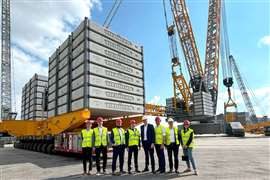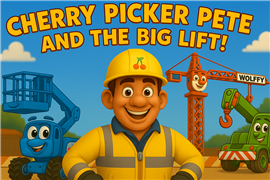Shares rise as the Dollar dives
15 April 2008
ACT's Heavy Equipment Index (HEI) picked up as 2006 drew to a close. Inevitably, October's heavy sell-of proved to be an over-reaction to the woes of the housing market that were refiected in Cat and Ingersoll Rand's results.
Indeed, the heavy selling made a few stocks look quite cheap, and something of a rally resulted for Astec, Manitowoc and Terex. In Terex's case, early December saw its stock break through the $60 mark for the first time (equivalent to $120 prior to the company's July 2006 two for one stock split).
But while this has helped the ACT HEI, the indicator still remains well below the high water mark set in the early summer. As of early December it was about -15% lower than its May peak of 160.1 points, holding fairly steady between 130 and 137. This equates to a market capitalization just above $ 100 billion.
This sideways period reflects the different factors that are weighing on the industry. On the negative side, the housing market is definitely in trouble, and this alone is sparking fears about the wider economy.
But aside from this, the picture is pretty bright, both domestically and internationally. American civil engineering is strong and there seems to be little let-up in the long waiting times for heavy equipment. As I have written before on this page, the length of lead times alone, particularly in the crane sector, indicates clearly that the industry will be working to full capacity well into 2007.
Dollar dive
Another factor that is playing into US heavy equipment manufacturers' hands is the buoyancy of the international scene and the new weakness of the Dollar. November saw the Greenback slip to its lowest against the Euro for 20 months and, at almost US$2 = UK£1, it is at its weakest against Sterling since 1992.
This depreciation, of course, makes US-built products more viable as exports. American manufacturers can discount their products in local currency, but still earn the same amount of Dollars. Alternatively, prices can be held steady locally, resulting in a bigger Dollar profit.
This also helps American manufacturers on the domestic market, due to the fact that imported products efiectively become more expensive.
Despite Ben Bernanke doing his bit to talk-up the Dollar - he says he is still worried about US inflation and that interest rate rises are a possibility - economic data would seem to contradict this. The Organization for Economic Cooperation and Development (OECD) for example has cut its forecast for US GDP growth next year to +2.4%, compared to the +3.1% predicted six months ago.
This and other indicators would suggest a cut, rather than rise, is likely to be the next interest rate move, which means the Dollar is likely to at least stay low, if not weaken further. So it's good news if you're a US-based manufacturer looking to export, but bad news if you're planning a holiday in Europe!act
DISCLOSURE: Chris Sleight does not own shares in any of the companies named in this column.
STAY CONNECTED


Receive the information you need when you need it through our world-leading magazines, newsletters and daily briefings.
CONNECT WITH THE TEAM











